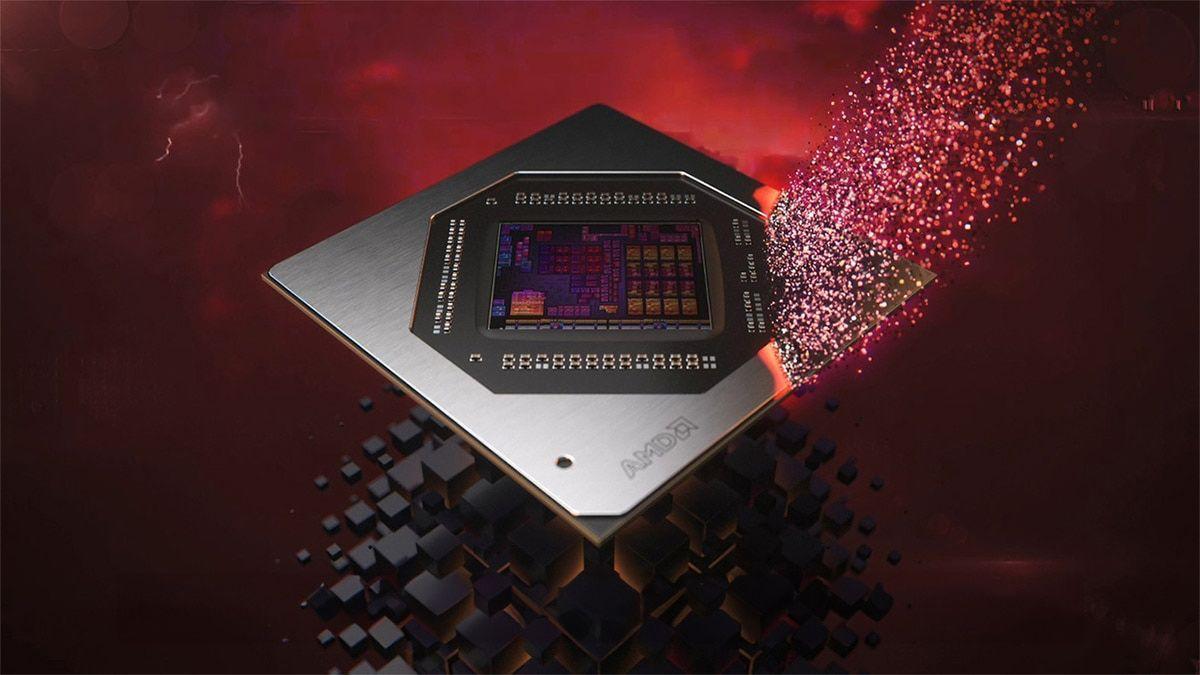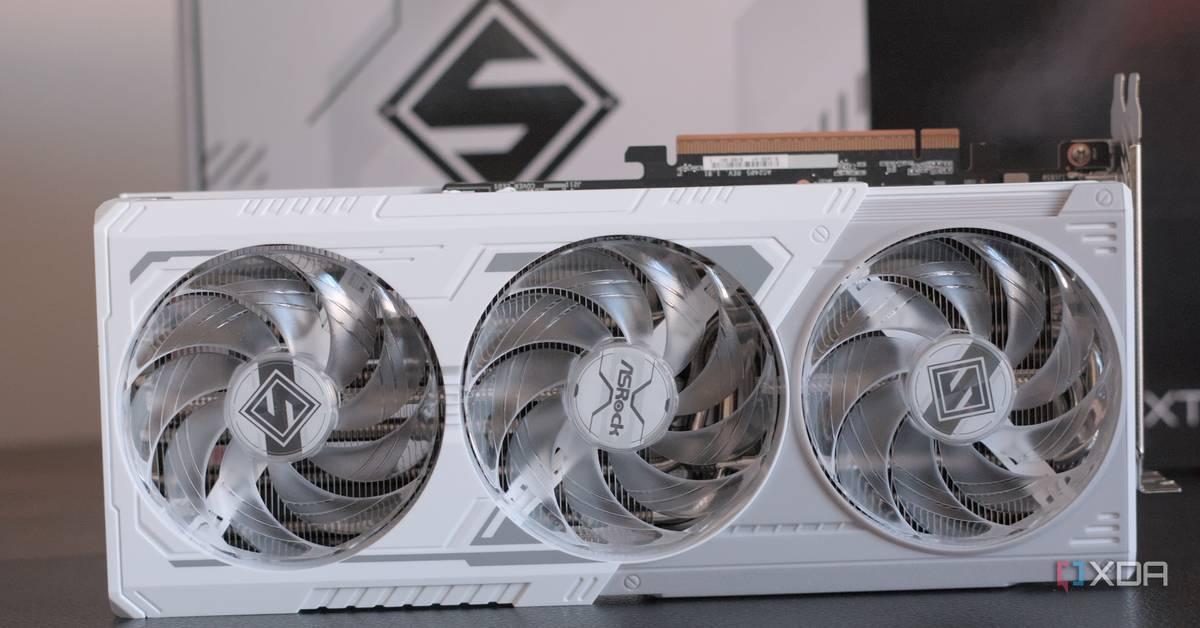AMD's Fluid Motion Frames 2 Exits Technical Preview, Promising Significant FPS Boosts
4 Sources
4 Sources
[1]
AMD's Fluid Motion Frames 2 is finally here to boost your frame rates
It works across AMD's RX 6000 and 7000 series graphics cards and the latest Ryzen laptops. AMD's Fluid Motion Frames 2 (FMF2) is the company's allegedly AI-powered frame generation tech that's meant to compete with Nvidia's latest version of DLSS. It was first released to users back in July, but that was in a beta version of the Adrenalin software package. Today, it's ready for prime time. AMD's Adrenalin version 24.9.1 is the software's first stable release to include FMF2. According to AMD's promotional materials, Fluid Motion Frames 2 is "AI-optimized for improved quality and smoothness," using lower frame generation latency with lower overhead on integrated graphics. It also works on borderless full-screen mode (big for gamers who run multiple background apps) and on games that use Vulkan and OpenGL graphics. FMF2 is compatible with AMD's RX 6000 and RX 7000 series GPUs on both desktops and laptops as well as integrated AMD graphics systems with RDNA 3 guts (including the latest Ryzen AI 9 HX 370 laptops). AMD estimates that combining FMF2 with its Hyper-RX suite of tools can give you double, even triple the frame rate for a game compared to its base, non-upscaled state. That's assuming some pretty high-powered hardware, up to the RX 7900 XTX card, according to the fine print.
[2]
AMD Fluid Motion Frames 2 exits Technical Preview with optimizations for PC gaming handhelds
AMD Software: Adrenalin Edition 24.9.1 is here. Although it adds new game support for Frostpunk 2, God of War Ragnarok, Warhammer 40,000: Space Marine 2, and The Sims 4 DirectX 11 Update, the big story is that AMD Fluid Motion Frames 2, or AFMF 2, is now out of technical preview. AMD's updated driver-based frame generation solution works for thousands of games with lower latency, faster performance, and better motion optimization than the original. It also now supports the OpenGL and Vulkan APIs, so you'd be hard-pressed to find a PC game that it doesn't work with. This is even more notable because AMD Fluid Motion Frames 2 has been optimized to work with the new AMD Ryzen AI 300 Series processors for laptops and upcoming portable PC gaming handhelds. It's also supported by AMD Radeon 700M integrated graphics, which can be found on devices like the ROG Ally from ASUS. With the latest integrated RDNA 3.5 graphics in the AMD Ryzen AI 300 Series, you're now looking at systems that can push 100+ FPS in games like Baldur's Gate 3 and F1 24 without a dedicated GPU. It's a remarkable achievement and points to a future where AMD could become the leader in all-in-one PC gaming solutions, where Ryzen and RDNA come together. Of course, AMD Fluid Motion Frames 2 benefits desktop Radeon RX 7000 Series gamers, as seen in the above benchmark results - boosting in-game performance by 2.5X on average in titles with FSR 2 upscaling. AFMF 2 is a big step forward for AMD's frame generation technology, bringing it closer to NVIDIA's DLSS 3 regarding performance and overall stability. AMD notes that it has leveraged "AI-driven enhancements" to improve efficiency. As previously reported, AMD is going all in on using AI when it comes to AFMF and even FSR - primarily to boost image clarity and performance on low-power devices like laptops and gaming handhelds. AMD Software: Adrenalin Edition 24.9.1 is a major driver update for Radeon owners. It also fixes issues with crashing and other in-game bugs or glitches in Warhammer 40,000: Space Marine 2, Final Fantasy XVI, Black Myth: Wukong, and Ghost of Tsushima Director's Cut. Head here for more on AMD Fluid Motion Frames 2.
[3]
AMD Fluid Motion Frames 2 Now Integrated into Stable Adrenalin Drivers
AMD has officially incorporated Fluid Motion Frames 2 (AFMF2), its advanced frame generation technology, into the stable release of the Adrenalin driver suite, transitioning the feature from its preview state. The latest Adrenalin 24.9.1 driver update seamlessly integrates AFMF2 into the primary driver branch, eliminating the need for separate driver previews. This integration allows users to enhance their gaming performance by enabling AFMF2 directly through the Radeon Control Panel on a per-application basis. Additionally, AFMF2 is part of the HYPR-RX feature stack, which includes super resolution technology to optimize rendering performance further by improving image clarity and frame delivery efficiency. AFMF2 enhances the original version by improving latency management and offering more configuration options for users. The updated technology balances performance and visual quality by providing different modes suited to various system capabilities. Specifically, AFMF2 includes High and Performance modes, allowing users to choose between higher frame rates or better visual quality based on their hardware. This flexibility benefits a wide range of devices, from low-power handheld systems to desktops with powerful RDNA2 and RDNA3 graphics cards. By allowing users to select the appropriate mode, AFMF2 optimizes frame generation to fit their gaming setup, improving the overall experience without affecting system stability. AFMF2 is compatible with all RDNA2 and RDNA3-based GPUs, including the Radeon RX 6000 and RX 7000 series, as well as integrated 700M and 800M graphics units. It does not support RDNA1 or older GPU models. Additionally, AMD has shown that AFMF2 works with Variable Graphics Memory technology in the Ryzen AI 300 series, known as Strix Point. This combination enables dynamic allocation of graphics memory based on application needs, enhancing performance and efficiency. Both AFMF2 and Variable Graphics Memory are available through the latest driver updates, although Variable Graphics Memory is not supported on the Phoenix platform. You can grab AMD's Adrenalin 24.9.1 driver here.
[4]
AMD Adrenalin 24.9.1 GPU Driver Out Now: Official Fluid Motion Frames 2 Integration, 2.5x FPS Boost, Geometric Downscaling & More
AMD has officially launched its Adrenalin 24.9.1 GPU driver which officially integrates Fluid Motion Frames 2 while adding new features. AMD claims an average of 2.5x higher performance with FSR 2 + AFMF 2, Fluid Motion Frames 2 Now Officially Integrated In Adrenalin 24.9.1 GPU Driver, More Software Updates AMD has launched its latest Adrenalin Edition 24.9.1 which introduces several new features. These included support for more games such as God of War Ragnarok and Frostpunk 2. Additionally, the Adrenalin 24.9.1 features AMD Fluid Motion Frames 2 and AMD Radeon Anti-Lag 2 Vulkan support for CS2. Today, AMD boasted about the performance gains with the AFMF 2, which reportedly increases the performance by an average of 2.5 times when combined with AMD FSR(Fidelity Super Resolution) 2. The AFMF 2 can be turned on with the HYPR-RX, which can be enabled by choosing the HYPR-RX profile in the Adrenalin software. As per the company, both AMD Radeon RX 7000 series GPUs and Ryzen 7000 CPUs with integrated graphics can achieve higher performance through AFMF 2 while the Radeon RX 6000 series allows enabling AFMF 2 globally in the Graphics Options. As per the company's benchmarks, games like Baldur's Gate 3 and F1 24 achieve over 2x the performance in every scenario when the HYPR-RX(AMD FSR 2 + AFMF 2) is turned on. The components tested were the Radeon RX 7900 XTX, RX 7800 XT, RX 7600 XT, and the Strix Point Ryzen AI 9 HX 370, which features the Radeon 890M graphics. The RX 7900 XTX achieved the highest performance boost of up to 3.2x in F1 24 on 4K Ultra high presets, increasing the average FPS from 45 to 145. The least performance boost was seen with the Ryzen AI 9 HX 370 at 1080p high settings in F1 24, which yielded 2x performance, increasing the average FPS from 61 to 121. As these numbers are from the company itself, take them with a grain of salt as the actual results can vary. Nonetheless, AMD is making progress with its software, and with the release of AFMF 2, it introduced gaming enhancement through lower latency in frame generation and fast motion optimization. The extended support to Strix Point APUs is also a welcome move as users with these APUs will require the most performance boost. The new software also brings other non-gaming features such as Geometric Downscaling, which reduces artifacts in video playback. In the blog post, AMD shows this by comparing a regular downscaling method to Geometric Downscaling, which keeps the artifacts at bay and decreases aliasing for smoother video quality. AMD Adrenalin Edition 24.9.1 can be downloaded from the official website, which supports Geometric Downscaling on Radeon 800M integrated GPUs and Radeon RX 7000 GPUs for desktop and mobile platforms. Lower Latency and Higher Performance Fast Motion Optimization Improved Borderless-Fullscreen Support Optimized AMD Ryzen AI 300 Series Support AMD Radeon Anti-Lag 2 Vulkan Support for Counter-Strike 2 AMD Radeon Anti-Lag 2 now supports the Vulkan API, offering additional responsive gaming options. AMD Radeon Anti-Lag 2 introduces an in-game option to optimally pace frames, further reducing input lag on AMD RDNA architecture-based graphics products. Geometric Downscaling for Video Mesh Nodes in Work Graphs via Microsoft Agility SDK 1.715.0 Preview
Share
Share
Copy Link
AMD has officially integrated Fluid Motion Frames 2 into its stable Adrenalin drivers, offering gamers potential frame rate increases of up to 2.5x without the need for specialized hardware.

AMD Launches Fluid Motion Frames 2
AMD has officially released Fluid Motion Frames 2 (FMF2), moving it out of technical preview and integrating it into the stable Adrenalin GPU drivers. This technology promises to significantly boost frame rates in PC games without requiring specialized hardware, marking a notable advancement in gaming performance
1
.How Fluid Motion Frames 2 Works
FMF2 is a frame generation technology that creates intermediate frames between rendered frames, effectively increasing the perceived frame rate. Unlike NVIDIA's DLSS 3, which requires specialized hardware found in RTX 40-series GPUs, AMD's solution works on a wider range of graphics cards, including those from previous generations
2
.Performance Improvements
According to AMD, Fluid Motion Frames 2 can provide frame rate increases of up to 2.5 times in some scenarios. This substantial boost in performance can potentially transform a game from being barely playable to running smoothly, especially on lower-end hardware or in demanding titles
3
.Compatibility and Availability
The technology is now available through the Adrenalin 24.1.1 driver update. It supports a wide range of AMD graphics cards, including the Radeon RX 5000, 6000, and 7000 series. Notably, FMF2 is also compatible with AMD-powered handheld gaming PCs, such as the ROG Ally and Legion Go, potentially enhancing the gaming experience on these portable devices
4
.Additional Features
Alongside FMF2, AMD has introduced other enhancements in the latest driver update. These include optimizations for specific games like "The Last of Us Part 1" and "Tekken 8," as well as a new feature called Geometric Downscaling. This feature allows for improved performance in games that don't support FSR or other upscaling technologies
4
.Related Stories
Potential Impact on Gaming
The release of Fluid Motion Frames 2 could have significant implications for PC gaming, particularly for users with older or less powerful hardware. By providing substantial frame rate improvements without the need for hardware upgrades, AMD is potentially extending the lifespan of existing graphics cards and improving accessibility to high-performance gaming
1
.Comparison to Competitors
While NVIDIA's DLSS 3 has been leading the frame generation technology race, AMD's FMF2 presents a compelling alternative. Its broader compatibility across different GPU generations and potential application in handheld gaming devices could give AMD a competitive edge in certain market segments
2
.References
Summarized by
Navi
[2]
Related Stories
AMD Boosts Gaming Performance on Ryzen AI 300 Series with AFMF 2 and VGM Technologies
12 Sept 2024

AMD's Fluid Motion Frames 3 and 'Redstone' Update: A Leap Forward in AI-Powered GPU Technology
30 Sept 2025•Technology

NVIDIA Introduces 'Smooth Motion': AI-Powered Frame Generation for RTX 50 Series GPUs
31 Jan 2025•Technology

Recent Highlights
1
Google launches Gemini 3 Flash as default AI model, delivering speed with Pro-grade reasoning
Technology

2
OpenAI launches GPT Image 1.5 as AI image generator war with Google intensifies
Technology

3
OpenAI launches ChatGPT app store, opening doors for third-party developers to build AI-powered apps
Technology





